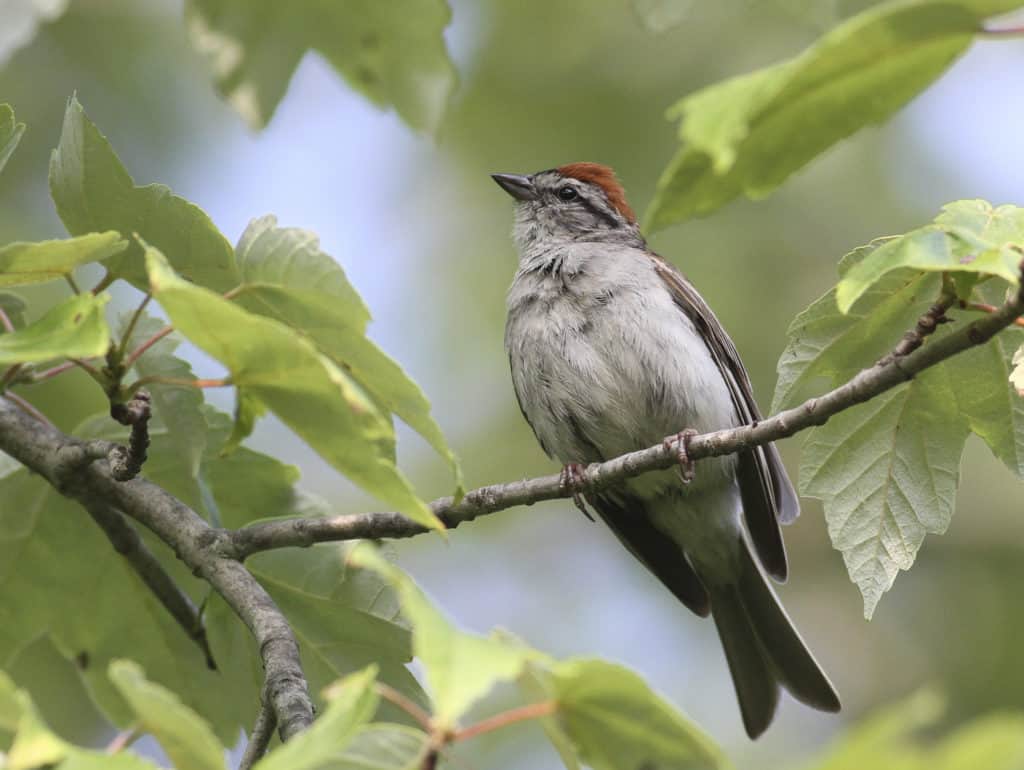Creature Feature

Chip the Sparrow
When I was weeding my garden, a sharp, short, high-pitched sound would start each time I walked near my large winterberry bush. The closer I got to the bush, the louder and quicker the sound occurred, kind of like a Geiger counter.
The origin of the sound was a common little bird aptly named the chipping sparrow. A pair of adults was protecting three youngsters. The parents started hopping around the outside of the bush to distract me. On some cue, all five flew off at once.
When I am in my yard in the summer and listen to the ambient bird calls, the chipping sparrow “chipping” always seems to be the most common noise. They talk to each other constantly and frequently have little loud squabbles.
These Geiger counter birds are the smallest and most slender of the local sparrows. They are the size of a goldfinch. Their tail has a distinctive Y shape, a uniformly dark brown beak, a horizontal dark streak crosses their eyes and adult birds have a red cap on their heads. Like most sparrows, their diet is varied and includes grains and insects. Insects are on the menu mostly during nesting season. They forage on the ground and nest in low dense trees and bushes.
During breeding season, they live as a family unit but afterwards they quickly form small flocks of up to a couple dozen birds. In the fall, they migrate south to the Gulf coast. In the spring they are one of the first birds to return north. They are found over the entire United States, even Alaska. Chipping sparrows are common but since 1970, the population has declined by about 35 percent. Loss of habitat is the main cause of their decline.
Sparrows can be difficult to identify, especially in winter plumage or as juveniles. Chipping sparrows have a voice that is a give-away, so keep your ears open.
